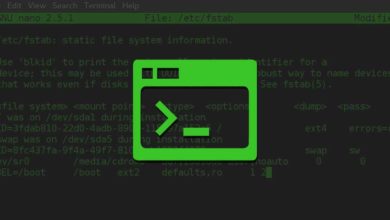Staking vs Masternodes: Difference between Masternodes & Proof of Stake
Masternodes and Staking: In cryptocurrency they both are a system that is known to provide passive income. But is that it; just paying interest or there is more to it? What are the difference between them, how do they work and in what ways do they benefit the network? Before we see the pros and cons of Staking vs Masternodes here is what we need to know about Blockchain technology.
Blockchain consensus mechanism: PoW / PoS / PoSe
Blockchain technology is the backbone of Bitcoin and many other cryptocurrencies. The main aspect of this technology is maintaining a digital ledger that is distributed and decentralized. The reason it is called decentralized is because there is no central location or database server that records all the transactions. Instead the records of transactions are publicly distributed to the network across the world. Have you ever wondered how all these transactions are being recorded to the public ledger? How it is operated, who verifies all these transactions and what ensures there is no invalid data appended to the blockchain?

Now, this is the job of consensus mechanism. The entire network is in consensus which verifies the information being recorded to the public ledger is valid. Every cryptocurrencies uses consensus algorithm and there are many different types of consensus mechanisms being used such as: Proof of Work (PoW), Proof of Stake (PoS), Delegated Proof of Stake (DPoS), Proof of Service (PoSe), Direct Acyclic Graph (DAG), Practical Byzantine Fault Tolerance (PBFT) etc. Each of these consensus mechanism has its pros and cons and here we are not going to discuss all of these. Instead we’ll just explain the difference between Proof of Stake and Proof of Service (Masternodes).
Proof of Stake (PoS) and Proof of Service (PoSe) – The difference
In order to better understand Proof of Stake (PoS) and Proof of Service (PoSe) let’s first briefly look into Proof of Work (PoW).
 Proof of Work (PoW) is the first consensus algorithm in Blockchain network used by Bitcoin. In PoW the blocks are created by miners. Each block in the blockchain contains a set of transaction data and for creating each new block the miner will get rewarded.
Proof of Work (PoW) is the first consensus algorithm in Blockchain network used by Bitcoin. In PoW the blocks are created by miners. Each block in the blockchain contains a set of transaction data and for creating each new block the miner will get rewarded.
In PoW; in order for the participant to add the next block in blockchain they need to find a solution for a complicated mathematical problem. To solve this problem computational power is required. Whoever has the most computing power will have the highest chance of finding a solution. This process is competitive and whoever generates the acceptable Proof of Work first wins the next block. This whole process of finding new blocks is called mining.
Proof of Work is the most popular consensus algorithm and some of the best examples of coins that uses PoW are Bitcoin, Ethereum, Litecoin and Monero. In Proof of Work the network is proven to be secure but the biggest downside is it is highly energy consuming. Now the answer to this high cost of mining is Proof of Stake.
Proof of Stake
 Proof of Stake is similar to Proof of Work. Their job is same; that is validating transactions, creating new blocks and distributing new coins.
Proof of Stake is similar to Proof of Work. Their job is same; that is validating transactions, creating new blocks and distributing new coins.
Peercoin is the first cryptocurrency to implement Proof of Stake which in addition to PoS also uses PoW. You’ll come across many hybrid PoW/PoS coins where the PoW is used for the creation of new coins and PoS is used to validate and maintain the security of the network. On the other hand there are also Pure Proof of Stake coins such as NXT, Blackcoin and Neblio. Among them Blackcoin and Neblio has coin inflation. But in NXT the max supply of 1 Billion NXT has reached and there won’t be any new coins created. In coins like this there won’t be any block rewards; instead the winner of the next block receives transaction fees as reward. So how the winners are determined in Proof of Stake?
How it Works?
Just like PoW; a sort of lottery is involved in Proof of Stake as well but the process is quite different. In Proof of Stake system there is no complex mathematical puzzle and so there is no computational power or burning of energy involved. Here the creator of the next block is chosen deterministically based on their wealth aka stake.
Proof of Stake mining is a process of holding coins in wallet unlocked and leaving them connected to the network 24 / 7. The creator of the next block will get stake rewards and this winner is chosen based on their coin shares. In order to participate in staking no minimum amount is required. However more the coins you stake and more longer you stake them; more the chance you’ll get to win stake rewards. Now let’s see how masternodes are different compared to Proof of Stake and what benefits do they offer to the network and its users.
Proof of Service – Masternodes
Masternodes and Proof of Stake have one thing in common; they are considered as a means of passive income in cryptosphere. Also they both work somewhat similar that is you hold a certain amount of coins and that holdings will generate you rewards from time to time. Due to this incentive model beginners tend to think that both Proof of Stake and Masternodes are same.
No, they are not! First of all the job of Masternodes is not same as PoW and PoS.
 Dash is the first crypto coin to introduce Masternodes. Consider masternodes as a secondary security system for the network. Unlike PoW and PoS; masternodes are not solely responsible for the creation of new block. This is why you’ll never come across coins that only uses Masternodes. You’ll find masternodes along with PoW (example: Dash). You’ll find masternodes along with PoS (example: PIVX) or you’ll find masternodes along with both PoW & PoS (example: LuxCoin). While they don’t create new blocks they have the power to reject blocks as even they secure the network and verify transactions. For additionally securing the network a part of block reward is also shared to Masternode holders. So how it is different compared to proof of stake?
Dash is the first crypto coin to introduce Masternodes. Consider masternodes as a secondary security system for the network. Unlike PoW and PoS; masternodes are not solely responsible for the creation of new block. This is why you’ll never come across coins that only uses Masternodes. You’ll find masternodes along with PoW (example: Dash). You’ll find masternodes along with PoS (example: PIVX) or you’ll find masternodes along with both PoW & PoS (example: LuxCoin). While they don’t create new blocks they have the power to reject blocks as even they secure the network and verify transactions. For additionally securing the network a part of block reward is also shared to Masternode holders. So how it is different compared to proof of stake?
In Masternodes you are not staking coins and securing the network just like in Proof of Stake. Instead masternodes provides extra service to the network. What type of service? Service such as hosting and maintaining the entire blockchain and enabling the following features: Instant transactions (InstantSend), Private transactions (PrivateSend), governance and voting rights. So basically masternode holders are not rewarded for just securing the network but for enabling these extra services on the blockchain. Hence it comes under Proof of Service or Proof of Commitment and not Proof of Stake.
How it works?
Masternodes are full nodes on the network that serves special purpose on the blockchain. Unlike Proof of Stake; in order to participate in Masternodes a certain amount of coins are needed to be locked. Also these coins cannot be held in your local wallet. It needs to be online 24 x 7 to secure the network. So to run a masternodes smoothly without any interruptions a VPS (Virtual Private Server) is required. Masternode rewards are also based on deterministic schedule but compared to Proof of Stake the profits in masternodes are more predictable.
Alright! Now as you are totally aware of the difference between Proof of Stake and Masternodes let’s see its pros and cons.
Staking vs Masternodes – Pros and Cons
There are a large number of Proof of Stake and Masternode coins available out there. Here we are not going to list all of them. Instead we’ll just share the advantages and disadvantages of running a masternode and staking. In general the following points applies to all coins and it should help you to decide when a coin that you are interested in has both masternode and staking feature.
Staking – PoS
- No minimum or specific amount of coins are needed to start staking. However more the coins you stake; more the chance you’ll have to win stake rewards.
- Setting up staking is very simple. All you need to do is unlock wallet and leave it open 24 x 7. For more information check this staking guide.
- Less penalty for being offline: Your wallet needs to be online in order to earn stake rewards. But is not a big issue if it goes offline because taking your wallet offline will not affect your coins age or weight.
- Staking is not only user friendly but is also cost effective. Apart from core wallet and coins to stake you don’t need any other resources.
- Staking requires hot wallet and this wallet needs to remain unlocked. While it unlocks only for staking purpose there are some potential risks involved.
- Due to large number of stakers from time to time you’ll get orphan blocks. But as we said it won’t impact your holdings.
- In staking the rewards are usually low. Also due to high competition on the network predicting profitability or payout frequency is quite difficulty.
Masternodes
- Compared to staking you’ll get more and bigger reward amounts in masternodes.
- The rewards and the frequency of payouts are more predictable.
- You can lock your coins and take your hot wallet offline and it won’t cause any impact as masternodes are usually hosted in hot/cold environment.
- Masternodes require a fixed amount as a collateral. This fixed amount are usually large and it depends from coin to coin. Not everyone can easily afford such large amount.
- Compared to staking setting up masternodes are quite difficult. Not just difficult to setup but some technical knowledge is required in order to maintain.
- Also there is a penalty if your Masternode goes offline and the penalty is delay in payments which will result in affecting your ROI.
- Due to server requirements there is an operating cost involved in running a masternode.
Hope this guide helps you to understand both staking and masternodes. Got any questions related to this topic? Please drop your comments below. Also if you found this guide helpful then kindly do share it on social networks.





Amazing stuff.
Great job with the post, very well explained!
I believe in platforms like 4stake.com, it makes the whole process to create a full or a shared mastenode much more easier, with a few clicks you are ready to receive your passive incomes from the coins you choose to invest in.
Worth the time to take a look.
Great explanation on proof of stake and masternodes.